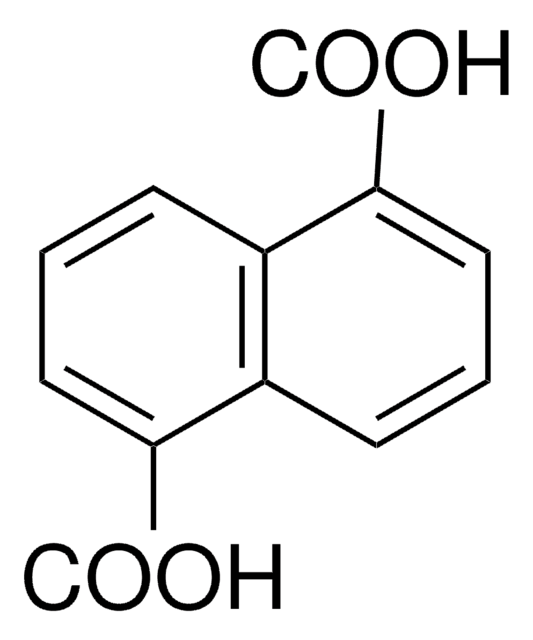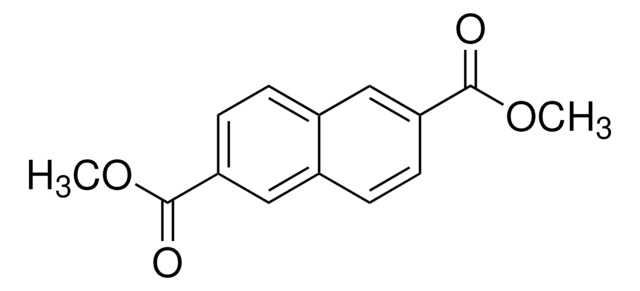724440
9,10-Anthracenedicarboxylic acid
95%
Synonym(s):
H2ADC
About This Item
Recommended Products
Assay
95%
form
solid
greener alternative product characteristics
Design for Energy Efficiency
Learn more about the Principles of Green Chemistry.
sustainability
Greener Alternative Product
mp
>300 °C
greener alternative category
, Enabling
SMILES string
OC(=O)c1c2ccccc2c(C(O)=O)c3ccccc13
InChI
1S/C16H10O4/c17-15(18)13-9-5-1-2-6-10(9)14(16(19)20)12-8-4-3-7-11(12)13/h1-8H,(H,17,18)(H,19,20)
InChI key
FDFGHPKPHFUHBP-UHFFFAOYSA-N
General description
Application
Certificates of Analysis (COA)
Search for Certificates of Analysis (COA) by entering the products Lot/Batch Number. Lot and Batch Numbers can be found on a product’s label following the words ‘Lot’ or ‘Batch’.
Already Own This Product?
Find documentation for the products that you have recently purchased in the Document Library.
Customers Also Viewed
Articles
Metal-organic frameworks offer high surface area materials for alternative energy applications through simple synthetic strategies.
Metal-organic frameworks offer high surface area materials for alternative energy applications through simple synthetic strategies.
Metal-organic frameworks offer high surface area materials for alternative energy applications through simple synthetic strategies.
Metal-organic frameworks offer high surface area materials for alternative energy applications through simple synthetic strategies.
Our team of scientists has experience in all areas of research including Life Science, Material Science, Chemical Synthesis, Chromatography, Analytical and many others.
Contact Technical Service












